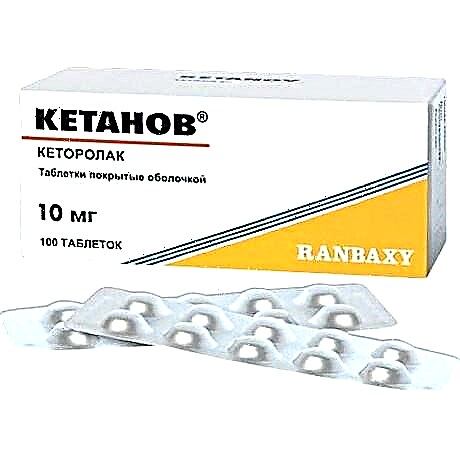The development of a child at 5 months will be devoted to consolidating and improving the acquired skills. After all, from six months a completely new stage of development will begin. The kid is waiting for the next leap.
Weight and height
Weight gain is no longer as fast as in previous months. The baby begins to move more, therefore, uses more energy. Many babies already require complementary foods at this stage due to their increased energy requirements.
The baby grows at approximately the same rate - 2 - 3 centimeters per month.
Daily routine and nutrition
The daily routine of a five month old baby has changed little over the past month. The baby needs all the same time to sleep - 15 hours, distributed between the night and three naps. Time for games increases. And now the child can spend 5 - 10 minutes on his own, devoting them to the study of parts of his body or a new interesting toy.

Many parents have already introduced or are considering introducing the first complementary foods to their child. Certain signs will help to assess the readiness for it - the baby's interest in adult food, the willingness to sit on his own, the absence of pushing movements with the tongue when semi-liquid food enters the mouth.
Doctor Komarovsky adds to these signs the presence of teeth. But the timing of their eruption in children is different. Some acquire them well beyond the recommended age of introduction of complementary foods (4 - 6 months).
Vegetable puree or porridge is recommended as the first complementary food. If the child weighs little, has problems with stool, it is necessary to start with cereals. Vegetables are preferred if you are overweight or constipated.
A useful and relevant article from a pediatrician that tells how to properly introduce vegetable puree into a children's diet and how to cook this product at home.
Baby skills at 5 months
What a 5-month-old child can do is not much different from a month ago. The difference in skills is what it does the child is more and more confident and perfect:
- the baby confidently turns over from back to side, stomach and back. Moreover, some children achieve such success that they can instantly roll off the couch or bed onto the floor. Therefore, you should not leave them alone with yourself;
- grabs a rattle. Can transfer it from one hand to another;
- when pulling on the handles, it rises and sits down.
 You cannot force a child to sit down. If you don't want to, don't.
You cannot force a child to sit down. If you don't want to, don't.
A 5-month-old boy may well sit down on his own. In the case of a girl, it is not recommended to plant before six months.
If the baby is already sitting on his own, remember to put a pillow behind him. The back muscles are not yet accustomed to such a load and quickly get tired. The child can lean back at any time.
- holds the bottle with the formula when feeding. If breastfeeding, supports her, adjusts the position for her convenience;
- improves coordination of body muscles. The kid learns to swing, can pull his legs to his head, put his fingers in his mouth;
- most of the transient reflexes of the newborn fade by this age;
- with the support under the armpits, the child stands on a solid support, almost completely straightening his legs.
Useful and always relevant information in an article by a pediatrician describing what a 1 month old baby can do and how to ensure the full development of a baby.
Learn from your pediatrician what your baby can do at 3 months old and how to stimulate his development with simple exercises and activities.
An informative article by a pediatrician, from which parents can find out what a child can do at 4 months and when to worry about delayed development.
A child at 6 months passes a kind of milestone. Find out what skills the baby acquires at this age from the children's doctor's article.
Behavior, emotion and communication

- the development of comprehensible and active speech continues. The child distinguishes intonation in the conversation of adults. He knows whether they turned to him affectionately or, on the contrary, severely. The "buzz" is getting longer. Individual sounds and syllables differ;
- the baby recognizes loved ones and distinguishes them from strangers. The attachment to the mother remains as strong. In her absence, the child may be ashamed of others, stop playing;
- demonstrates a variety of emotions depending on the situation - joy, fear, resentment, curiosity;
- the infant learns to consciously attract attention using a cry and a nearby rattle;
- the development of subject memory is indicated. If a toy already known to the kid is partially hidden in a conspicuous place, the child, seeing only a part, will happily recognize it and stretch out to grab it;
- from all the toys he singles out favorite ones with whom he prefers to play more often.
Activities with a child
The actions that a child should be able to do at 5 months can and should be developed. It is helpful for parents to know how to do this.
If you want to develop your baby literally from the cradle, check out the psychological article, which discusses the most common and popular methods of early childhood development.
Preparing the baby's back for future loads
The transition of the body to an upright position requires some preparation. To do this, you should regularly do massage and gymnastics. In this case, massage movements can be diversified. Use not only stroking, rubbing and vibration, but also beating with your fingertips, pinching and light kneading elements.
Fitball exercises are good to strengthen the baby's back. The kid, lying on his stomach, will try to straighten his legs and direct his arms forward, resembling an airplane in his pose. It is convenient to sit down the baby from a supine position, holding him by his palms. These simple exercises will help strengthen your back and abs.
In this regard, water procedures are also useful, accompanied by exercises for toning muscles (baby swimming).
Development of fine motor skills
Exposure to certain points on the palmar surface of the hand helps the child to realize, feel his sensations and the work of the hand muscles. Finger games, rolling a massage ball, sensory boxes will help in this.
When filling such a box, be sure to make sure that there are no too small or fragile things there that the child can break or swallow.
Communication and tactile contact
The need for constant close contact runs through the life of an infant as a red thread. Thanks to it, the baby's need for protection is satisfied, and a basic trust in the world is formed.
Constantly sounding speech, explanations about surrounding things and phenomena help the child to understand their essence, replenish vocabulary. Although not all the sounding words are understandable for a five-month-old baby.
But, trying to imitate the speech of the parents, the baby thereby makes a great contribution to its formation.
Songs, sounds of music
The baby's hearing organ can already distinguish the rhythm. And words superimposed on this rhythm will be more understandable than ordinary speech. Hearing music, the child will try to move to its beat. Listening to the lullaby performed by my mother, she will soon "purr", trying to get into the notes.
You can also diversify your sound experience with bells. They can be tied to a handle, leg. Moving, the child will listen, look for the source of the sound, be interested in his body parts, look at, touch them and even pull into his mouth.
Acquaintance with the book
First of all - with pictures. The little one will be interested in looking at colorful images. Animals are especially interesting in this regard. At the same time, hearing the simple "mu", "woof", "meow" and "kar", the kid will try to repeat these simple syllables, which will replenish his vocabulary.
Article rating:



